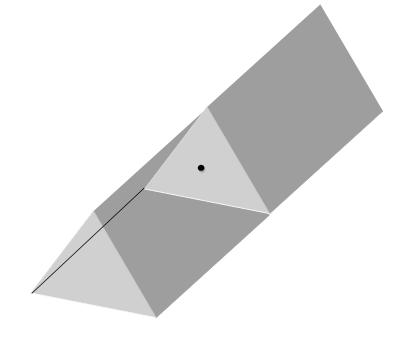q3 epsilon ??

If a positive point charge q is kept at the center of a distribution ( equilateral triangle with side a)
then what is the flux through each of the sides of the triangle?
I want to know the gaussian surface we would construct. I am at a loss at that.
Perhaps we need to make use of symmetry in this question?
-
UP 0 DOWN 0 0 11

11 Answers
no need to make or use gaussian surface......by gauss law net fluxthrough triangle = qξ where ξ is the epsilon.......soo this the net flux through three rods soo through one rod it is q3ξ
dude but for flux we need to have a area . sides the traingle have area?
the answer can be zero ?
no dude no need of area ......if u go through the gauss law net flux through the three surfaces = qξ....so from this we can proceed ......area cna be used if we ve find the electric field by gauss law......
But , this is not a closed surface , so how can we say that there is flux through it..i think it is zero !?
There is a small issue with this question..
The intended answer would have been probably q/(3ε0)
But the problem here is that the answer will be zero..

This is the situation where the three walls would get equal flux..
Of which one third will fall on each wall... so the answer would be q/(3ε0)
But here we have a straight line... Not the infinite plane.. so here the flux through the line will be zero.
..but Nishant bhaiya what about the flux linked with the two side walls since there is a point charge inside the Gaussian surface. Had there been linear charge perpendicular to the side walls then the flux through one of the three symmetric walls is q/(3ε0).
Yeppy..it is zero itself !!!! [1]
@ ut 10 : it has to be a closed surface [acc to me as Nishant bro has not said anything about that idea ]
Closed Surface : In mathematics a closed surface (2-manifold) is a closed manifold of dimension two; the definition may also require that they have a single connected component.[citation needed] Examples are spaces like the sphere, the torus, and the Klein bottle. They are classified by the genus and their orientability.
Gauss's Law : The electric flux through any closed surface is proportional to the enclosed electric charge
[Taken from wikipedia ]
Thank you guys...all of you...you are great.
By the way....zero was the answer given and i needed an explanation for it. Thought it was q/3(epsilon)
Thanks again!